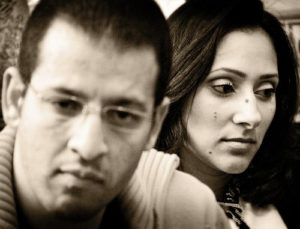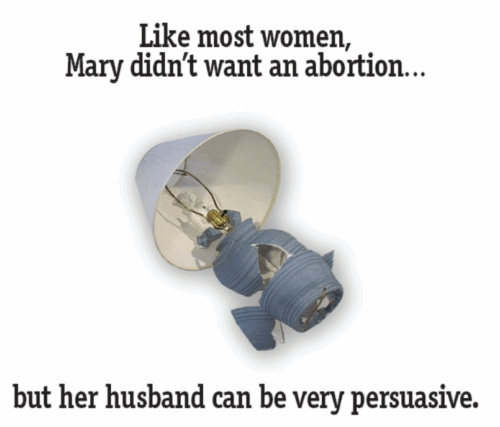It’s Time to Focus on Unwanted Abortions
- Over 60% of aborting women report they felt pressured to abort contrary to their own preferences.
- 24% describe their abortions as unwanted or coerced.
- Unregulated abortion empowers abusers, denies women the help they need to avoid unwanted abortions, and enriches unethical abortion providers.
Why aren’t we talking more about the national crisis of unwanted abortions?!!
A peer reviewed medical study has revealed that 64% of women with a history of abortion felt pressured to abort contrary to their own preferences. In addition, 24% described their abortions as “unwanted” or “coerced.”
Dwell on those facts for a moment.
Even better, take a few minutes to watch Britney Spear’s autobiographical music video Everytime. Spear’s unwanted abortion, described in her memoir, led to suicidal thoughts and perhaps contributed to many of her psychological troubles.
Clearly, even a single unwanted abortion is a heartbreaking occurrence. But these avoidable tragedies occur thousands of times every day!
As a result literally tens of millions of women, in the United States alone, are suffering from the disenfranchised grief that follows unwanted abortions!
Unwanted abortions are also more harmful
In addition, the more pressure women face, whether from other people or circumstances, such as financial pressures, the more severe they are likely to report negative mental helath outcomes, disruption of relationships, and impacted grief.
In short, unwanted abortions are also unsafe. They do more harm than good.
The simple truth is that most abortions are contrary to what women would truly prefer . . . if only they had support from family, friends, and society. Most feel trapped, not liberated.
Of course, the abortion industry pretends that all abortions are freely wanted and overwhelmingly beneficial. Indeed, Planned Parenthood’s propaganda claims that the most prominent feeling after abortion is relief. But these are lies. Very dangerous lies.
What can we do about it?
First, whenever we are talking about the abortion issue, we must always, always, always include a mention the problem of “unwanted abortions.”
For people who are truly pro-choice, this is a wakeup call. This topic provides common ground for both pro-choice and pro-life action.
People of good will on both sides of the abortion debate will always agree that no woman should ever feel pressured into aborting a child she would rather keep.
Conversely, people who are not of good will need to be exposed. Which brings me to the second point.
Many of those who hide behind the rhetoric of being “pro-choice” are actually pro-abortion. Their goal is to increase abortion rates. Their numbers include eugenicists, population controllers, and social engineers who have spent the last sixty years on efforts to make it easier for women to be pressured into unwanted abortions.
You will find their motivations clearly spelled out in the 1992 letter from Ron Weddington, co-counsel with his wife Sarah in Roe v Wade, that outlined President Clinton’s agenda to expand access to cheap abortion pills precisely “to eliminate the barely educated, unhealthy and poor segment of our country” since “26 million food stamp recipients is more than the economy can stand.”
In short, to distinguish between those who are truly pro-choice and those who are pro-abortion, simply ask: “What are you willing to do to stop the national crisis of unwanted and unsafe abortions?”
If they are truly pro-choice, they will share our concerns and support the simple idea that doctors should be held accountable for properly screening for coercion and similar risk factors.
But if they oppose liability for negligent pre-abortion screening, much less pretend that there is no problem with unwanted abortions, they are pro-abortion, not pro-choice. They need to be exposed for defending the abortion industry’s profits at the expense of women.
The political solution is to focus on pre-abortion screening
The American Psychological Association’s 2008 Task Force on Mental Health and Abortion noted at least fifteen factors that identify the women at highest risk of more severe psychological problems following an abortion.
Perceived pressure to undergo an unwanted abortion is at the top of the list. In theory, even the National Abortion Federation agrees there should be screening for these risk factors.
But most abortion clinics do not screen for them. Why?
First, because proper screening and counseling is time consuming. Customized counseling might even require some women to come back for a second or even third session. This is totally contrary to the abortion industry’s fifteen-minute, one-size-fits-all, assembly line counseling model.
Quick in. Quick out. That’s how they maximize patient flow and keep the price of abortion artificially low.
Second, abortion providers currently face no liability for emotional injuries caused by their complicity in unwanted abortions. Most jurisdictions preclude suing for emotional damages absent proof of a physical injury.
Plus, the statute of limitations for medical malpractice is short. Until a woman has been through extensive post-abortion healing, the degree of trauma, grief and shame experienced after an abortion will prevent women from seeking a lawyer, much less testifying in court. On average, post-abortion healing doesn’t begin until ten years after an abortion…long after a two-year statute of limitations has expired.
For over fifty years these obstacles have completely shielded abortion clinics from any liability for pre-abortion screening and counseling.
The only way to prevent unwanted and unsafe abortions is to guarantee women unwaivable rights of redress.
These laws should also create the presumption that the patient would not have agreed to the abortion whenever there is evidence of negligent screening and counseling. That means a victim of such negligence should also be entitled to damages for the wrongful death of her child, since the baby would not have been aborted if she had received evidence-based counseling.
It’s hard to oppose common sense
Clearly, no one openly favors unwanted abortions. Moreover, both the APA and the National Abortion Federation are on record that it is best practice to screen for these risk factors.
This leaves abortion providers with the only option: claiming that they are already doing a good enough job of screening and counseling. That’s why there is no need for new legislation, they will say.
But if they are already doing a good job, then there is no reason to oppose putting those same standards into statute. If Planned Parenthood, for example, insists they are already providing excellent screening and counseling, then logically they should still support our model bill simply to ensure that every other abortion provider will rise up to their own high standard of care.
The only reason to oppose statutory standards of care if one truly doesn’t want women to get proper screening and counseling . . . precisely because one prefers to turn a blind eye to unwanted and unsafe abortions . . . exchanging the welfare of women for population control or social engineering purposes.
Opponents of our model legislation will never admit this, of course. Instead, they will insist that kindly abortion doctors should simply be spared the threat of “harassment suits.” Afterall, they are simply giving women what they want, abortions on request. (Ignoring the fact that the request is often made under duress.)
But everywhere else in medicine, doctors have a duty to screen for risk factors. Doctors have a duty to determine if the likely risks of a medical procedure are greater than any proven benefits.
Women considering abortion . . . especially when they are feeling pressured into unwanted abortions . . . deserve no less.
—————————————
David C. Reardon is the author of numerous medical studies on abortion complications and of Making Abortion Rare: A Healing Strategy for a Divided Nation.
Did you know that homicide is the leading killer of pregnant women?
Learn more about coerced abortions in your free copy of Forced Abortion in America.


